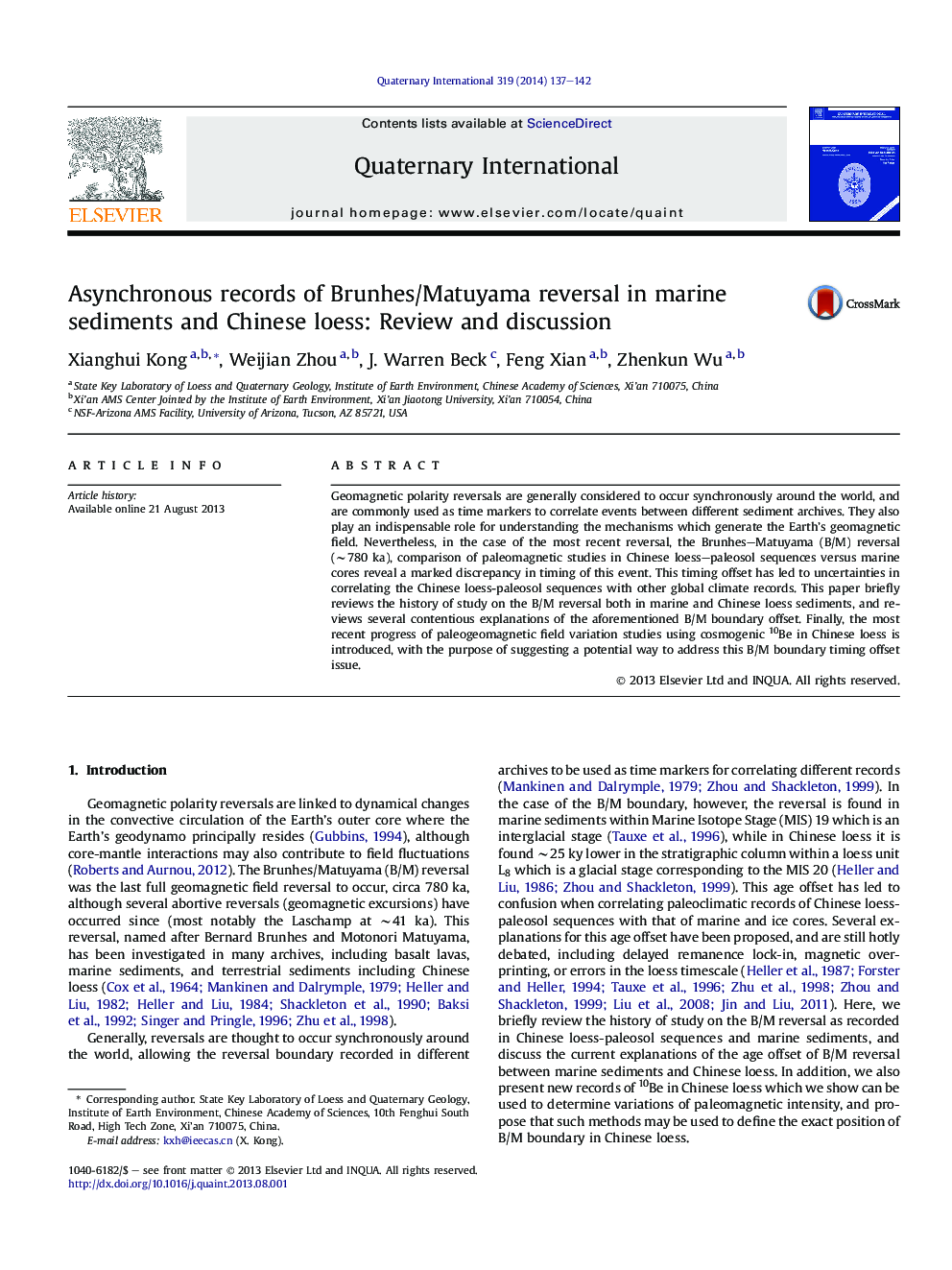| Article ID | Journal | Published Year | Pages | File Type |
|---|---|---|---|---|
| 1041973 | Quaternary International | 2014 | 6 Pages |
Abstract
Geomagnetic polarity reversals are generally considered to occur synchronously around the world, and are commonly used as time markers to correlate events between different sediment archives. They also play an indispensable role for understanding the mechanisms which generate the Earth's geomagnetic field. Nevertheless, in the case of the most recent reversal, the Brunhes-Matuyama (B/M) reversal (â¼780Â ka), comparison of paleomagnetic studies in Chinese loess-paleosol sequences versus marine cores reveal a marked discrepancy in timing of this event. This timing offset has led to uncertainties in correlating the Chinese loess-paleosol sequences with other global climate records. This paper briefly reviews the history of study on the B/M reversal both in marine and Chinese loess sediments, and reviews several contentious explanations of the aforementioned B/M boundary offset. Finally, the most recent progress of paleogeomagnetic field variation studies using cosmogenic 10Be in Chinese loess is introduced, with the purpose of suggesting a potential way to address this B/M boundary timing offset issue.
Related Topics
Physical Sciences and Engineering
Earth and Planetary Sciences
Geology
Authors
Xianghui Kong, Weijian Zhou, J. Warren Beck, Feng Xian, Zhenkun Wu,
